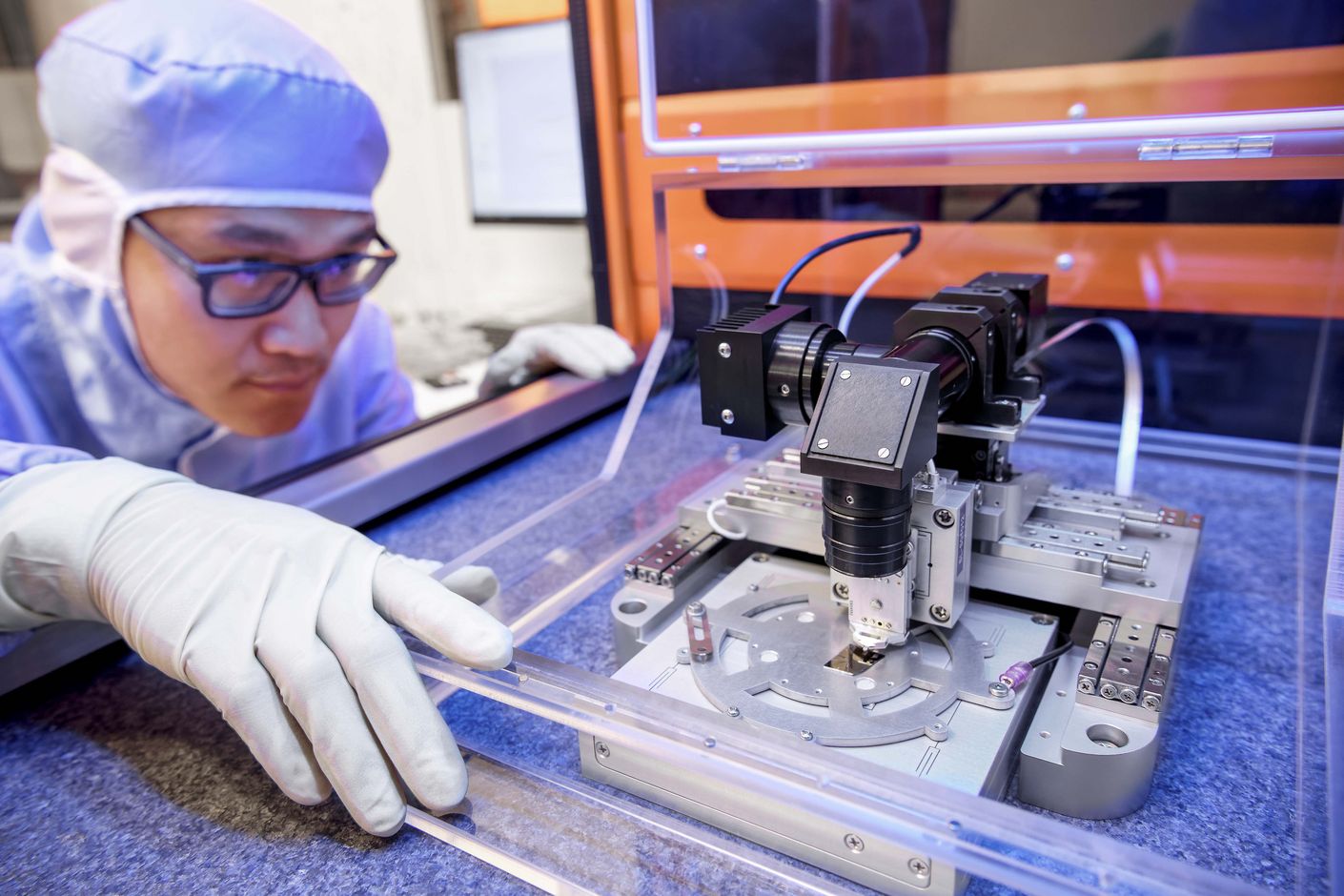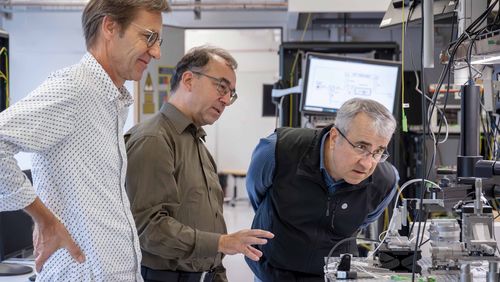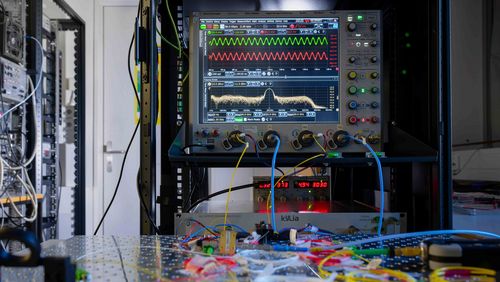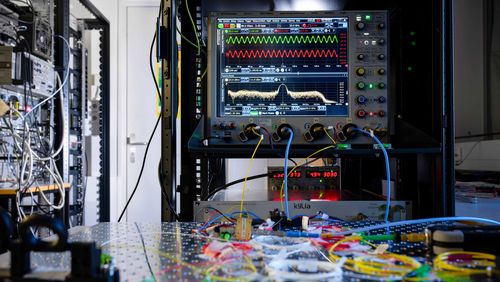
Little big breakthrough
Researchers at the Center for Single Atom Electronics and Photonics are experimenting on an entirely new kind of microchip—one that functions at the atomic level. Financed by the Werner Siemens Foundation, the innovative project has already produced excellent results, with laboratory experiments now revealing the enormous potential of the microchip’s core component: the singleatom transistor. Researchers in the project led by Jürg Leuthold, head of the Institute of Electromagnetic Fields at ETH Zurich, have developed a new transistor version in a gel electrolyte that requires only six millivolts to function at room temperature: a world record.
Entering uncharted territory means encountering unheard of problems—an experience that holds true for Jürg Leuthold, Thomas Schimmel, Mathieu Luisier and their teams, as they endeavour to develop an innovative, atom-sized microchip. The three professors and their research groups have already worked together to create a prototype of the incredibly tiny single-atom switch. Unlike standard microchips that function via electrons, the new switch operates using a single atom that is shunted back and forth. The principle behind the microchip is as follows: two miniscule metallic contacts are placed close together—so close that the space between them is large enough for only a single atom. When an atom is shunted between the metallic contacts, it closes the gap and enables an electric current to flow from one side to the other. When the atom is removed, the gap re-opens, meaning the electric circuit is broken and no current can pass through. The basic concept of using a single atom for “switching” an electric current or an optical signal can find a number of practical applications: depending on the configuration, the microchip could function as an on-off switch, a transistor, a modulator or even a storage cell.


Atomic building blocks
Physicist and nanotechnologist Professor Thomas Schimmel and his team from the Karlsruhe Institute of Technology (KIT) improved upon the existing single-atom transistor and created a new version in a gel electrolyte that functions at room temperature at an even lower voltage: under laboratory conditions, its control voltage is only 6 millivolts—in contrast to the 700 millivolts needed by even the most modern generation of traditional transistors. “What was unthinkable a short time ago is now reality,” says Thomas Schimmel, who has recently applied for a patent. Now, a future microchip that is not just 100 times but up to 10 000 times more energyefficient is theoretically possible. Nevertheless, a great deal of work remains before the theory is transformed into practice and used to manufacture ordinary electronic devices. “But our experiments already indicate what is physically possible,” says Schimmel. The single-atom transistor is just one of a dozen or so building blocks that will be used to construct the innovative microchip. The modulator—a part that converts an electric signal into an optical (light) signal—and its counterpart, the photodetector, have also been created. In addition, an electric switch and a volatile memory component are under development. Volatile memory components can retain content over the duration of an electric current. Now, Jürg Leuthold and his team must also find a way to make non-volatile memory components to ensure that data stored on the microchip are not lost when the chip is no longer connected to an energy supply—for instance when a computer is turned off.
Meticulous craftsmanship
The goal is to have all key components of the atomic microchip ready by 2021. “It’s an ambitious schedule, but the three research groups are committed to succeeding,” Leuthold says. Nevertheless, quite a few factors in the research field depend on smaller and larger breakthroughs—and breakthroughs are notoriously difficult to predict. One aspect that has proven a major challenge is the manufacture of tiny, atomic-scale wires. Moreover, the production steps in making the atomsized transistors are complex and demanding, meaning that Leuthold, Schimmel and their teams are experimenting with a wide range of materials and geometries.
Computer simulations
Computer simulations can help explain the principle of the single-atom switch even before all building components have been perfected, and the researchers in the group of Professor Mathieu Luisier at ETH Zurich are currently working on such simulations. Jürg Leuthold says that important milestones have been achieved in this area: last year, for instance, the researchers succeeded in simulating potential materials—silver, platinum and glass—and then conducted experiments to observe how they react to heat, light and electronic impulses. “ We pretty much know exactly what process will lead to an atomic switch,” says Jürg Leuthold.
Text: Andres Eberhard
Photos: Felix Wey









